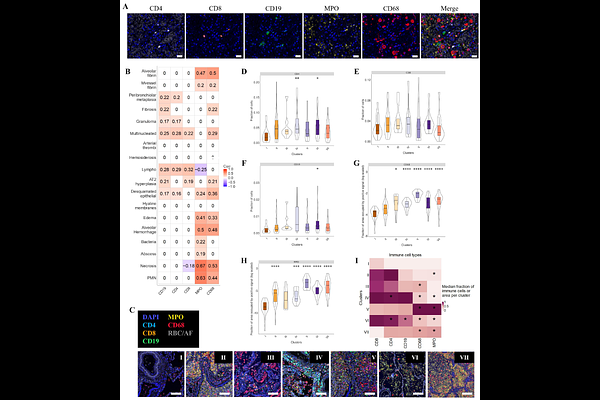Sub-phenotypes of pneumonia defined by pulmonary histopathological features

Sub-phenotypes of pneumonia defined by pulmonary histopathological features
Shastry, A.; Hiller, B. E.; Sanders, N. L.; Tseng, A. E.; Kothari, J.; O'Connell, A. K.; Gertje, H. P.; Ha, C. T.; Murzin, E.; Traber, K. E.; Lederer, J. A.; Jones, M. R.; Douam, F.; Beach, T. G.; Remick, D. G.; Crossland, N. A.; Monti, S.; Campbell, J. D.; Mizgerd, J. P.
AbstractEstablishing sub-phenotypes of pneumonia based on distinct host processes will be a step towards using host-directed therapies (to complement microbe-directed therapies) more rationally and precisely. Although pneumonia is a pulmonary pathophysiology, histological changes within the lungs have not been leveraged for sub-phenotyping. We addressed this by scoring 18 histopathology features (e.g., type 2 cell hyperplasia or necrosis) across rapid autopsy lung samples from 276 elderly subjects with pneumonia. Machine learning algorithms segregated subjects into seven different sub-phenotypes of pneumonia with distinct histopathology signatures. Quantitative immunofluorescence demonstrated associations of macrophages, neutrophils, T cells, and B cells with select histology features and pulmonary pathology sub-phenotypes. Mouse models revealed corollary sub-phenotypes, although some histology features observed in human lungs were never observed in mice. By illuminating this spectrum of histopathologies and discriminating discrete sub-phenotypes of pneumonia, a foundational framework emerges for developing and using host-directed therapies for subsets of pneumonia patients.